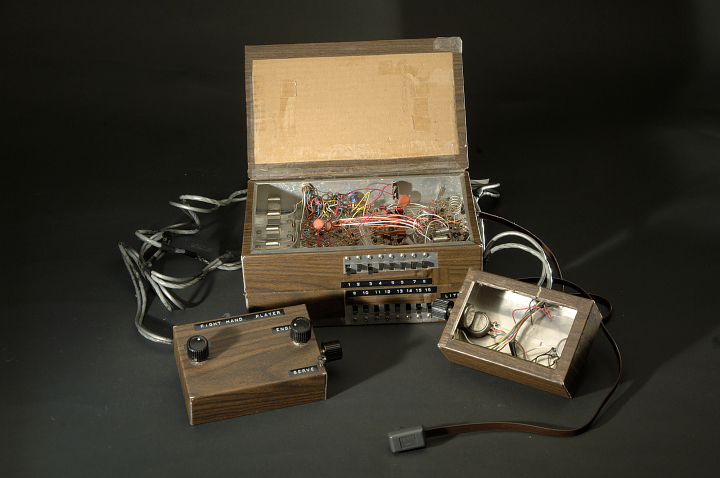This year’s NeuroGaming Conference and Expo unveiled a future where video gamers use innovations such as wireless eyewear to immerse themselves in a virtual world. Instead of watching pro basketball on a screen, players can face LeBron James in a virtual court surrounded by screaming fans. But before leaving Wii basketball behind for the next generation, today’s gamers might pause to take a trip down memory lane, and revisit the great gaming systems of the past that laid the foundation for today’s technology.
Serving Up Pong and Space Invaders
Infographic: Evolution of the Console, From ‘Brown Box’ to Wii U
World War II radar displays inspired the first video game, where players used knobs and buttons to fire at aerial targets simulated by a cathode ray tube beam, akin to a TV screen. Over the next two decades, inventors and academic researchers experimented with a variety of games and platforms, notes Time.
Some used cathode rays to play games like tic-tac-toe. Others used mainframe computers to simulate baseball or starcraft battles. In 1961, MIT students produced the first popular video game, Spacewar!, where players controlled spaceships and fired missiles at each other. The first generation of gamers distributed Spacewar! over the infant Internet.
Meanwhile, electronics researchers developed games that could be played on a TV screen using interfaces such as light guns to simulate target shooting and table tennis. These efforts produced the first home video game console in 1969.
These streams of development came together through the work of Nolan Bushnell and Ted Dabney, who founded Atari in 1972. The previous year, they released a coin-operated arcade version of Spacewar!, which became a prototype for Taito and Midway’s smash arcade hit of 1978, Space Invaders. Meanwhile Atari released Pong, the first successful arcade game, which was inspired by a table tennis simulation game included in the first home game video console, the Magnavox Odyssey. Magnavox sued Atari, but it was too late to stop its momentum, according to Time
Pac-Man Devours the World
For Amusement Only: the life and death of the American arcade
A glut of cheap Pong knock-offs flooded the home console market in 1977, killing most competitors. Atari revived the industry with its VCS system, later known as the 2600, which offered a home version of Space Invaders. Meanwhile, Atari fueled arcade gaming with a follow-up to Space Invaders, Asteroids, which, like its predecessor, used simple dark and light graphics.
The arrival of color arcade games saw a multi-billion dollar surge in the industry, heralded by the arrival of Pac-Man from Japan in 1980. The dot-devouring ghost chaser became a pop culture icon, dominating arcades and making the transition to the 2600 to help Atari eat up its home console competition.
Super Mario to the Rescue
A Story of Modern Day Gaming – Console Wars
The arcade era dwindled during the mid-1980s, but not before Donkey Kong propelled Nintendo into the future. The Japanese company leaped to the front of the home console market in 1985 with its Nintendo Entertainment System, and then initiated the rise of handheld games with Game Boy in 1989. Since then, Nintendo has jostled for leadership of the industry with competitors such as Sega, Sony and Microsoft. Innovations such as Xbox and Wii have altered the interface of home consoles, while the arcade battleground has shifted to online and mobile gaming environments supported by internet connections. But orbiting above today’s satellites, gamers who listen closely can still hear the ominous march of descending Space Invaders.
Creative Commons image by See El Photo
